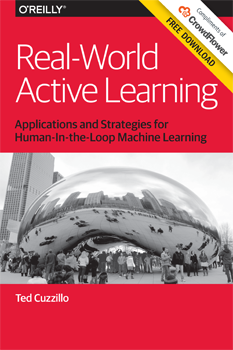"human-in-the-loop machine learning" entries

The business value of unifying data
Practical applications of human-in-the-loop machine learning.
With hundreds, thousands, or even just tens of suppliers — each with different business units, payment terms, and locations — businesses are faced with a monumental task: unifying all of their supplier-related data, and fast so that it can be useful. In order to ask deep questions about their data, companies are increasingly looking for a single, unified view of their supply chain.
And yet, business data is often stored in different sources, systems, and formats, resulting in silos of information. These data silos take the form of enterprise resource planning systems, CSV files, spreadsheets, and relational databases. To pull together all of the data from these disparate sources, a business faces three interrelated challenges:
- Speed. Traditionally, businesses have attempted to catalog and organize supply chain data manually — profiling and integrating data themselves, which leads directly to the next challenge: cost.
- Cost. Manual work is expensive work. Usually more than one employee will need to work on the same data set in order to move quickly enough for the results to have any value for the business. Even with several employees working on the same data sets, this work will still not achieve what could be done on a machine scale.
- Efficiency. Relying completely on humans to organize and unify data is a situation ripe for error. Plus, there’s often no audit trail, and the work results in inherently incomplete views of information.
In a recent live demo by Dr. Clare Bernard, a field engineer at Tamr, I got a glimpse into how Tamr is using a combination of machine learning algorithms and input from subject matter experts to help businesses unify their data for analysis. A practice that uses short-term human intervention to actively improve machine models, human-in-the-loop machine learning is taking off across all types of industries, including fashion, automotive, and cloud services such as Google Maps. Read more…

Human-in-the-loop machine learning
Practical machine-learning applications and strategies from experts in active learning.
What do you call a practice that most data scientists have heard of, few have tried, and even fewer know how to do well? It turns out, no one is quite certain what to call it. In our latest free report Real-World Active Learning: Applications and Strategies for Human-in-the-Loop Machine Learning, we examine the relatively new field of “active learning” — also referred to as “human computation,” “human-machine hybrid systems,” and “human-in-the-loop machine learning.” Whatever you call it, the field is exploding with practical applications that are proving the efficiency of combining human and machine intelligence.
Learn from the experts
Through in-depth interviews with experts in the field of active learning and crowdsource management, industry analyst Ted Cuzzillo reveals top tips and strategies for using short-term human intervention to actively improve machine models. As you’ll discover, the point at which a machine model fails is precisely where there’s an opportunity to insert — and benefit from — human judgment.Find out:
- When active learning works best
- How to manage crowdsource contributors (including expert-level contributors)
- Basic principles of labeling data
- Best practice methods for assessing labels
- When to skip the crowd and mine your own data
Explore real-world examples
This report gives you a behind-the-scenes look at how human-in-the-loop machine learning has helped improve the accuracy of Google Maps, match business listings at GoDaddy, rank top search results at Yahoo!, refer relevant job postings to people on LinkedIn, identify expert-level contributors using the Quizz recruitment method, and recommend women’s clothing based on customer and product data at Stitch Fix. Read more…

